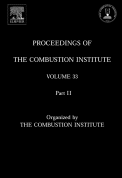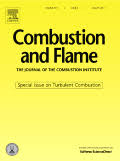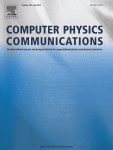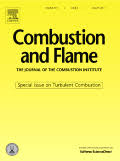
In this work we present and apply a mathematical model to simulate the auto-ignition of isolated fuel droplets burning in microgravity conditions. The aim is to demonstrate the fundamental role of the low-temperature mechanisms on the auto-ignition process and to show that several experimental observations cannot be explained without considering the formation of cool-flames around the burning droplet.
Thus, in order to better clarify the importance of the low-temperature chemistry, a detailed kinetic scheme (with hundreds of species and thousands of reactions) was adopted to model the spontaneous ignition of isolated droplets of n-heptane, n-decane, and n-dodecane in air, in a wide range of operating conditions (with environment temperatures from 600 K to 1100 K and pressures from 1 bar to 20 bar).
The model was able to correctly identify the typical auto-ignition regimes of n-alkane oxidation. The comparison with the experimental measurements available in the literature was satisfactory: both first-stage and total induction times were reasonably captured by the numerical simulations. The simulations confirmed that the low-temperature chemistry plays a role of paramount importance in the auto-ignition process. In particular, the competition between low- and high-temperature mechanisms was found to explain the different types of auto-ignition which can be experimentally observed.
Keywords
Low-temperature chemistry; Cool flame; Detailed kinetics; Microgravity; Droplet
How to cite
Cuoci, A., Frassoldati, A., Faravelli, T., Ranzi, E.
Numerical modeling of auto-ignition of isolated fuel droplets in microgravity
Proceedings of the Combustion Institute, 35 (2), pp. 1621-1627 (2015)









